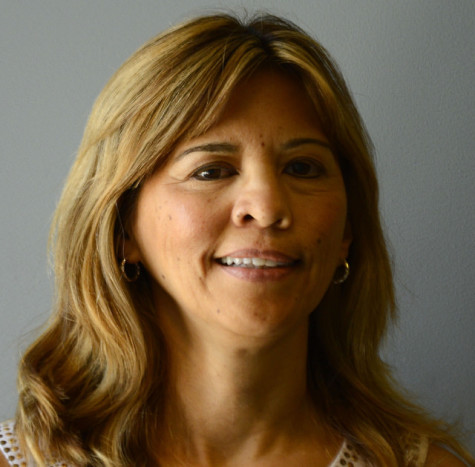Affordable Care Act proves critics wrong in 2014
December 9, 2014
On the heels of critics’ predictions that the Affordable Care Act would cause a health care apocalypse, the ACA heads into 2015 squashing those claims.
One year into the mandate requiring U.S. residents to have health insurance, the benefits of ACA, also known as Obamacare, are becoming clear.
Because of the mandate, the number of Americans without insurance dropped 25 percent this year. In California, it fell 11 percent. At the same time, consumer choices are growing.
“Despite the cries of the Obamacare bashers that insurance companies would leave the exchanges in droves once they discovered how much money they were losing, it turns out that competition and choice are increasing as we head into 2015,” wrote Forbes columnist Rick Unger.
In fact, a recent study by the McKinsey Center found that more insurers are choosing to join the ACA exchanges. In 41 states, the number of insurers rose by 26 percent this year, while in 19 states the number of products offered through the ACA jumped 66 percent. Meanwhile, according to reports by McKinsey and the Commonwealth Fund, the median cost of insurance premiums are rising at a much slower rate than before–a 4 percent average–compared to the 10 percent average preceding the legislation.
Californians without coverage can still get it through Covered California, the state’s new health exchange created under the ACA. The 2015 open enrollment period began in November and continues through Feb. 15.
CC is an online marketplace that helps consumers compare health insurance plans, purchase coverage and determine eligibility for federal subsidies like Medicaid.
According to Covered California Executive Director Peter V. Lee, about 1.2 million Californians used the exchange to obtain coverage this year. CC officials hope to enroll half a million more for 2015.
The exchange is open to all legal California residents. Despite widespread rumors, undocumented immigrants are not eligible for ACA coverage, nor are incarcerated individuals.
The ACA mandate was accompanied by new consumer protections. Among them: health coverage can no longer be denied due to a pre-existing condition; coverage is guaranteed for all eligible applicants; there’s no annual limit on benefits; rates cannot be based on gender or health status; and young adults can now stay on parents’ health plans through age 25.
Nursing major Aireonna Carranza, 21, is covered by a parent’s employer-provided plan, as is 18-year old automotive engineering major Nathanial Floris.
Vanessa Terrill was also on her mother’s plan, until recently.
“It got too expensive for my mom,” the 19-year-old Diablo Valley College student said, “so me and my sister got taken off.” Terrill’s family is now seeking a more affordable option.
Affordability has been one of the top three obstacles to getting insured, according to CC officials.
Prior to the ACA, pre-existing conditions and lack of employer-provided health plans were also barriers. The ACA targets these hurdles by imposing rate restraints, excluding pre-existing conditions as a disqualifying factor, and providing insurance access to those without employer plans. It also requires large employers to offer employee health coverage.
The CC exchange presents a host of health plans at various rates and service levels. But all include basic benefits such as doctor’s office visits, emergency services, hospitalization, maternity and newborn care, mental health services and prescription drugs. Preventive services are also covered without a copay or coinsurance fee.
Insurance plans and health services are provided by name-brand companies such as Anthem Blue Cross and Blue Shield, Health Net and Kaiser Permanente.
Though many DVC students say they know little about the ACA, they generally support the legislation.
“I know it’s making health care insurance affordable for a lot of people who need it and that sounds pretty good to me,” Floris said.
According to a recent Gallup poll, young adults have made the largest gains under ACA compared with other age groups. The Gallup poll also showed the number of uninsured adults between the ages of 18 to 25 dropped to 21 percent in the first quarter of this year, down from 27 percent in 2008. According to an October article in the New York Times, that’s the lowest number of uninsured in that age group since tracking began in 1997.
For more information, or to apply for coverage, consumers can go to http://www.coveredca.com/, call CC at (800)300-1506, or visit the Contra Costa County Employment and Human Services Department—locations are listed at http://ehsd.org/directors/find-an-office/. CC will also hold Enrollment Fairs at the Concord Library from 10 a.m. to 1 p.m. on Dec. 13, Jan. 10, Jan. 24 and Feb. 14; and at the Brentwood Library from 5 to 7:30 p.m. on Dec. 10, Jan. 14 and Feb. 11. CC certified enrollment counselors will be there to assist.
| DISPELLING MYTHS ABOUT THE AFFORDABLE CARE ACT | |
| MYTH | FACT |
| The ACA is socialized medicine. | ACA health care plans and services are provided by name brand insurers like Kaiser Permanente, Blue Shield of California and HealthNet—not by the government. |
| The ACA creates death panels. | Introduced by Sarah Palin in 2009, this was a popular talking point among ACA opponents claiming that the legislation would create “death panels” to determine who could receive health care. This claim was purely fictional. As reported by PolitiFact, a non-partisan fact-checking arm of the Tampa Bay Times, “The claim was widely debunked and named PolitiFact’s Lie of the Year.” |
| The ACA provides health care insurance to illegal immigrants. | The ACA explicitly excludes undocumented immigrants. |






































































